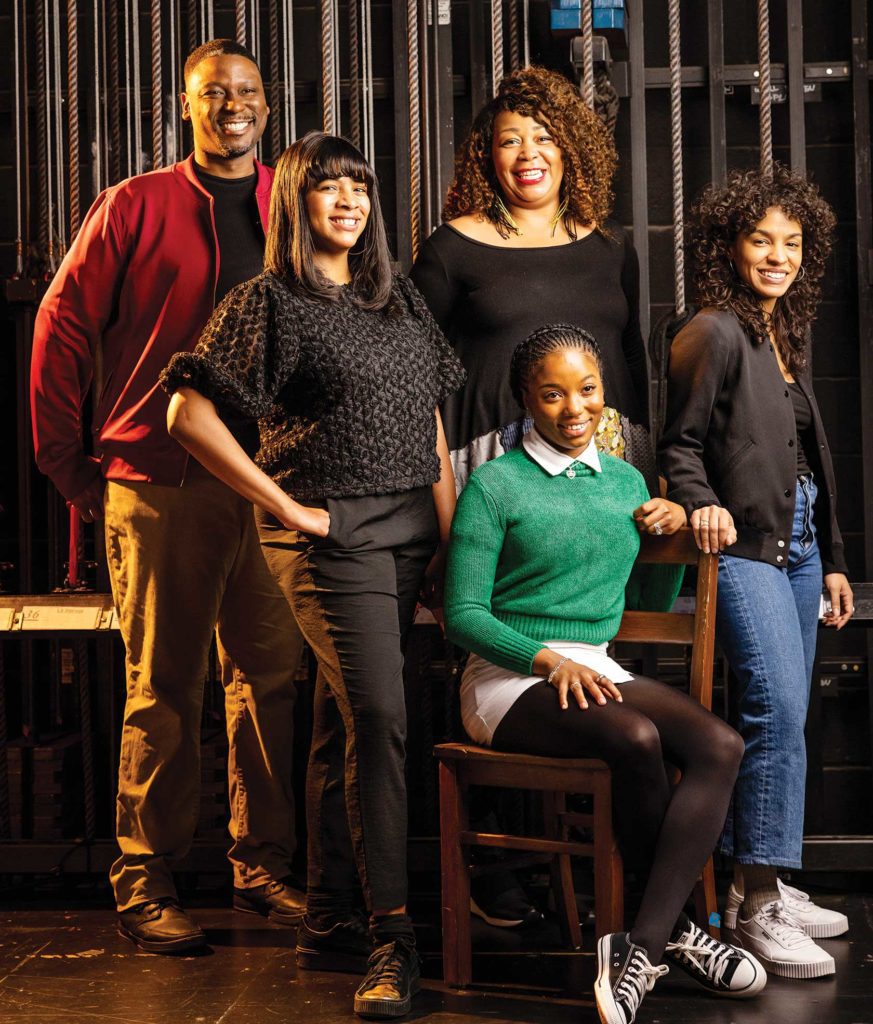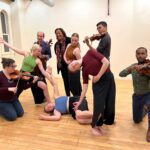
The Huntington launches its 2022 theater season with a powerful adaptation of Toni Morrison’s “The Bluest Eye,” running Jan. 28–March 13. Adapted for the theater by Lydia Diamond and directed by Awoye Timpo, “The Bluest Eye” tells the story of Pecola, a young Black girl who believes her challenges in life would be solved if only she had blue eyes.
“I remember reading ‘The Bluest Eye,’ I think it must have been when I was in middle school,” says Timpo. “I remember very distinctly reading the book and being very moved by it at a young age, because of course I was closer to the age of the little girls who are telling the story.” Diamond’s adaptation maintains the essence of Morrison’s story, a portrait of a community and a coming of age, while streamlining the narrative for the stage.
Drawing on Black storytelling traditions and the structure of the novel, The Huntington’s production will be staged in the round, with audiences surrounding an intimate, circular stage. Though “The Bluest Eye” tells the story of Pecola, it’s told through the eyes of two of her childhood acquaintances. Presenting the piece as a moment of storytelling honors that structure.
“The Bluest Eye” in both novel and theater formats puts young Black women at the center of the story, providing representation that is still sorely lacking in those spaces. Pecola’s story examines how young Black women absorb and process images of Eurocentric beauty standards and how those standards devalue those who don’t align with them. “What does it mean when young people don’t see positive reflections of themselves in this society?” says Timpo. “What happens to them if that is not there?”
The structure of the story, being told by two onlookers, serves two purposes. It diffuses the intense emotions and challenging themes of the novel by providing moments of childhood curiosity and joy in the narrative. The format also illustrates what the two young female narrators have learned with time. Looking back on the events that occurred in their community, the narrators relive the joy and wonder of childhood while bringing adult reflections to what they experienced. Timpo feels similarly when she reads the novel now, through adult eyes.
The action of the “The Bluest Eye” is set in the early 1940s, and Morrison wrote the novel in 1970, but the themes examined in the narrative continue to pervade contemporary societal consciousness. “It’s a story about community, it’s a story about family, it’s a story about what’s our responsibility to each other. It’s about, how do we come up in the world and how does that influence our future?” says Timpo. “And I think those are the exact questions that we’re all asking ourselves right now.”


![Banner [Virtual] Art Gallery](https://baystatebanner.com/wp-content/uploads/2024/04/NJ-H_1-150x150.jpg)


![Banner [Virtual] Art Gallery](https://baystatebanner.com/wp-content/uploads/2024/04/NJ-H_1-713x848.jpg)

